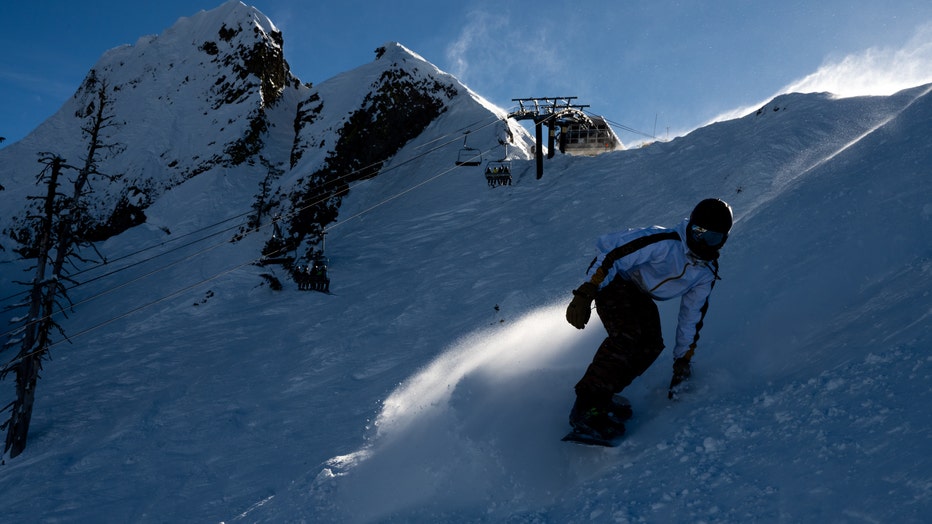California snowpack mostly off to a good start
California snowpack mostly off to a good start
The California Department of Water Resources took its first official snow survey at Phillips Station at the entrance to the Sierra-At-Tahoe Ski Resort on Thursday.
EL DORADO COUNTY, Calif. - The California Department of Water Resources took its first official snow survey at Phillips Station at the entrance to the Sierra-At-Tahoe Ski Resort on Thursday.
At this point, what we have is a mixed bag of positive news with a good dose of future concern.
California began Sierra snow surveys 115 years ago. Here, at Phillips Station, six specific spots on this meadow have been measured and averaged for 84 years.
Today, this is just one of 265 snow courses plus another 130 remote snow sensors blanketing the vast snowpack area. This combo of human surveys and remote sensing gives water planners, farmers, 27 major water agencies and wildlife protectors excellent, accurate and critical information.

A snowboarder at Palisades Tahoe ski resort in Olympic Valley, California. Photographer: Marlena Sloss/Bloomberg via Getty Images
"Our snowpack is about 110% of average based on our automated snow sensor network statewide and statewide precipitation is about 115% of average right now," said DWR Snow Survey and Forecasting Manager Andy Reising.
But north of Interstate 80, where all the big mega reservoirs are, the snowpack is a whopping 160% of average on this date. One caution, there have been some years where rain and snow season started out gang busters, only to see storms mostly disappear after the first of the year. "Back in 2022 we had 150% of average snowpack on this day in January, but it ended up on April 1st at 37% of average, so we definitely dried out. Most of the storms that are predicted are gonna be north of California for the next two weeks," said Reising.
For more than four decades, veteran meteorologist Jan Null has developed many aspects of weather forecasting and taught legions of meteorologists the art and science of forecasting. "It's a little too early, I think, to have any concerns. Having these fluctuations through the course of the year is not unexpected. We're not even to the midway point of the rainfall year," said Null.
Null says, beyond two-week forecasts, we're mostly just guessing. "Looking father out, talking about long-range weather forecasts, it's not there yet," said Null.
That said, one thing is for sure. "We'll need a progression of monthly storms to keep going, because otherwise, we will end up maybe similar, under average by the end of the year," said DWR’s Reising.
Things are good enough that the Water Resources have increased water deliveries to those with water rights from 5% to 15% with the water it already has.
Featured
California's 1st snowpack survey of 2025 may offer promise, but will it last?
California's first monthly snowpack survey comes on Thursday. It's likely to be reasonably good for this early part of the rain and snow season.


